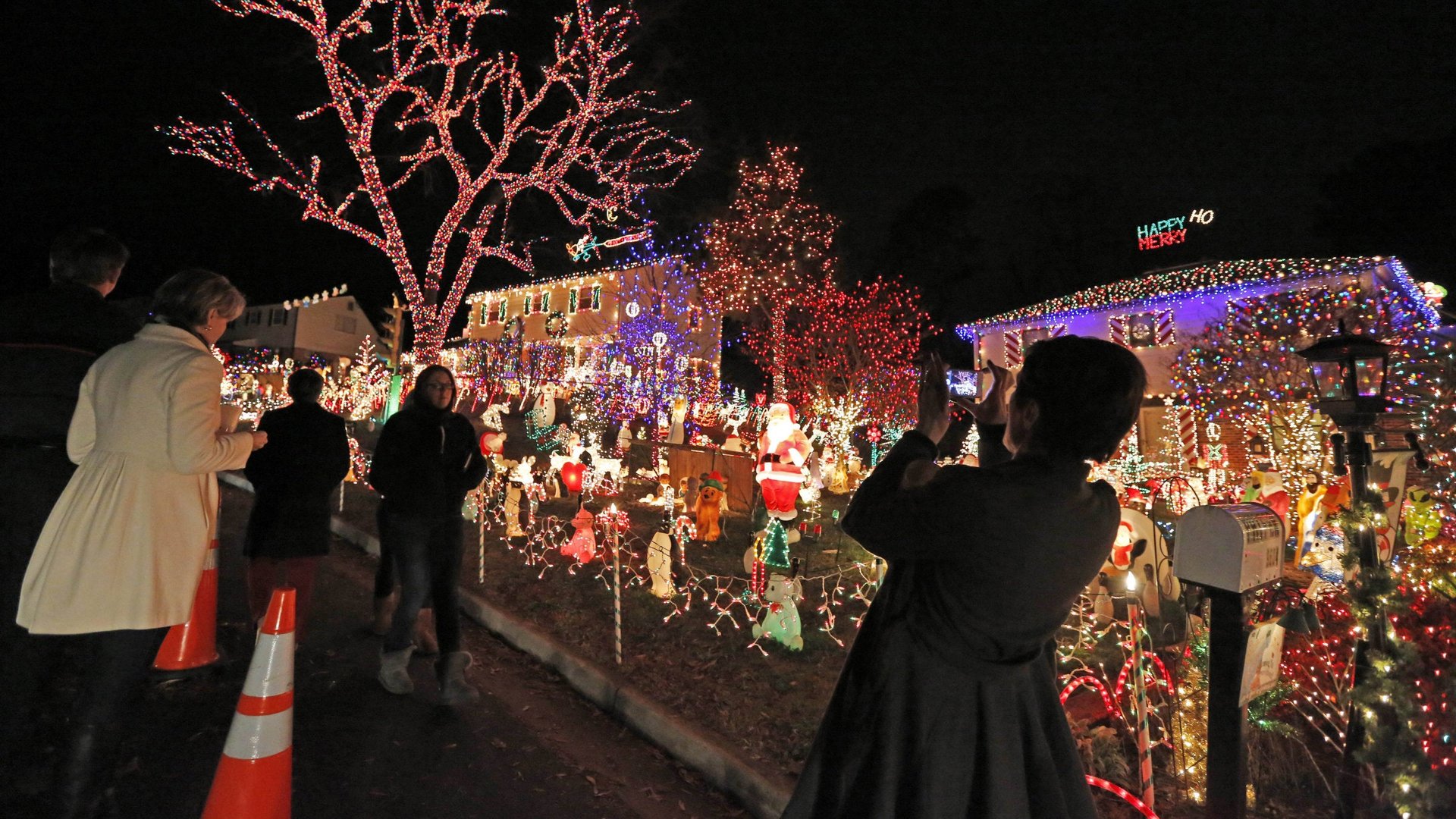The real magic of Christmas: How to string lights without a single extension cord
This time of year, the Richards family’s electric bill tops $2,200 because the half-million Christmas lights on their home in Forrest, Canberra, if laid end to end, would stretch 31 miles. This is 150,000 more bulbs than last year’s record set by the Gay family of Lagrangeville, New York. (The Gays are dimming their efforts this year to pay for the kids’ college.)


This time of year, the Richards family’s electric bill tops $2,200 because the half-million Christmas lights on their home in Forrest, Canberra, if laid end to end, would stretch 31 miles. This is 150,000 more bulbs than last year’s record set by the Gay family of Lagrangeville, New York. (The Gays are dimming their efforts this year to pay for the kids’ college.)
For the rest of us, managing even a few dozen Christmas lights can be less than joyful. There are some basic problems: do not blow the gift budget on electricity, do not burn the house before you burn the turkey, and do not deck the halls with an assault course of trip wires and stretched-tight surge protectors.
Here’s the good news: Quartz has declared 2014 as the year of the Internet of Things, which means Santa is bringing us a world of wireless sensor networks and home automation systems that work almost as hard as Buddy the Elf. The internet of things may be a ghost of Christmas Yet To Come, but it has some tricks to help us change our life today.
Let there be light … if there are people
First, you can more than cut your electric bill by three-quarters by making sure your lights only come on when there is somebody around to see them. There are lots of ways to do this, from light sensors to motion sensors, but by far the coolest is to use a Belkin WeMo Insight Switch—full disclosure: I led the development of the WeMo system, but do not work for Belkin now—combined with your smart phone and some magic from a web site called “If This, Then That,” or “IFTTT”‑an online repository for “recipes” that make your various gadgets work together. This recipe, by the delightfully Dickensian-looking Lane Weatherford of Beaumont, Texas, uses the GPS on your phone to tell your WeMo switch to your Christmas lights off when you leave the house.
Unlike light sensors, motion sensors and timers, Weatherford’s method also ensures your house will not burn down while your are out tolerating and being tolerated by your mother in-law. And if you are still waiting for Santa to bring you your first smartphone, or that all sounds too complicated, this recipe will turn your lights on at sunset, while this one will turn them off again sunrise. Whichever recipe you use, the WeMo switch will also tell you exactly how much money you are wasting on your holiday lights—potentially useful information that may make you feel like one of the three wise men this time next year.
Tis the season to go wireless
If cables on the floor are not your idea of a holiday garland, light up windows, doors, and other places far from the nearest outlet with battery-powered LED bulbs. This Swiss Pine Wreath includes a timer to save battery life and glows with a bright, warm light, without the bluish tinge of some LEDs, in either flickering or steady modes. The improvements in LED technology behind the wreath are also available in strings of lights, which like the wreath, last longer and shine brighter than they did a few years ago.
Not all LED lights run on batteries, but, even when they plug into an outlet, they are the very best way to celebrate a 21st century Christmas. They do not get hot, are unlikely to blow out for many years, and, in some cases—see the Philips Hue—can shimmer through an almost infinite range of colors. Once again, you can use IFTTT to program them—for example to make them do special tricks at special times, such as when your children wake up on Christmas morning. Most important of all, LEDs are the Ebenezer Scrooge of illumination: they lights uses one-tenth of the energy of traditional incandescent bulbs. The Richards family in Australia knows this—every one of their half-a-million bulbs is an LED. Without that modern touch, their electric bill would be $25,000 a month.